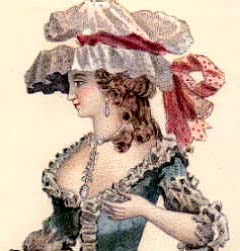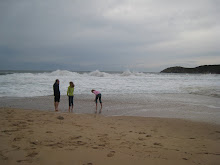The roads in our neighborhood all began their lives several centuries ago as goat tracks. I imagine that the goats and their shepherds beat down the grass for decades before someone decided that there was enough room to lead a donkey along, and maybe one day someone hitched a cart to that donkey, and then, eventually, enough farmers owned something with an internal combustion engine that the mairie decided to invest in some asphalt. And that is pretty much where we stand (or drive) now.
Goats are not known, at least, I would be surprised to learn if they were, for travelling in straight lines. Certainly their paved paths don't. I drive in a straight line rarely enough to notice and remember the straight bits: for example, the road from Opio to Valbonne begins with a straightaway of about a quarter of a mile before it passes through a traffic circle and begins waltzing along, taking one up and two steps back. And those goats, when they decided to make a turn, knew their minds: none of these sissy, sheep-like lazy curves. Our ancestral goats turned on a dime.
On the way to the girls' school from our house, I take a particularly sharp, blind, downhill hairpin curve around a high stone wall on the inside and a sharp dropoff on the outside. Cars coming from both directions can see nothing of the other side of the curve until the moment at which--well, at which they can, which is pretty far along in the curve. These goats had nerves of steel. Adding to the challenge is the road that, after a straightish downhill for several hundred meters, deadends into the side of the curve, in a spot that is visible from neither direction. I imagine ancient herds getting a little mixed up at this point.
The other day I was toodling along at my standard 30 kilometers per hour in what I am beginning to think of as the French equivalent of an Oldsmobile--my large grey Citroen automatic-transmission station wagon. I approached the curve with caution, staying to the right side of the road (inasmuch as a road that is four meters wide can be said to have two sides), and peering cautiously around the curve, trying to catch a glimpse of approaching bumper. Imagine my surprise when a small white delivery truck trundled into the curve from the left. This truck was the size of the family-sized toasters sold in some Midwestern branches of Sears, except it had been welded to an engine, a little like someone's 4H project: hey, Ma, look what I can do with a lawnmower engine and that toaster you got for Christmas. As the truck blew past my hood I caught a glimpse of an amply dimensioned family--father, toddler, mother--squeezed into the front seat in passionate conversation. The absence of any evidence of braking suggested that this conversation was not about the politics of stopping before entering ongoing traffic. I followed the delivery truck around the curve, wondering how I had missed that particular goat.
Once I got in line behind the truck, I could see that the driver--still no brakelights--was dangling his left arm out the window. He continued to take the ensuing curves with vigor and, I think, continued his discussion: every few moments he gestured with his left hand in an unmistakably conversational way. What were they talking about? Was it, as one of the girls' friends says, a family problem? Was it what they were delivering? Was it lunch?
Meanwhile, back in the Oldsmobile, I kept to the right side of the road.
Sunday, September 23, 2007
Subscribe to:
Post Comments (Atom)






































No comments:
Post a Comment